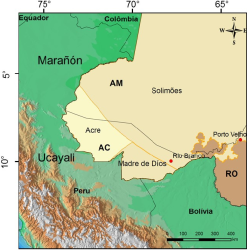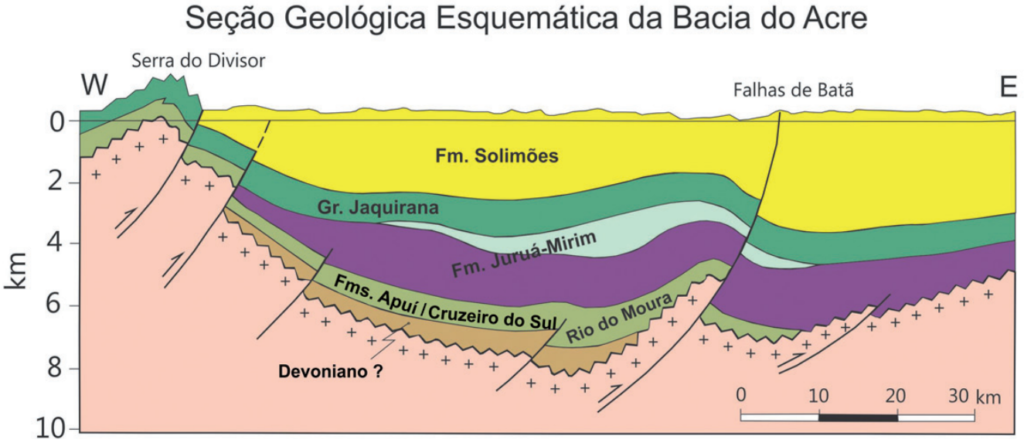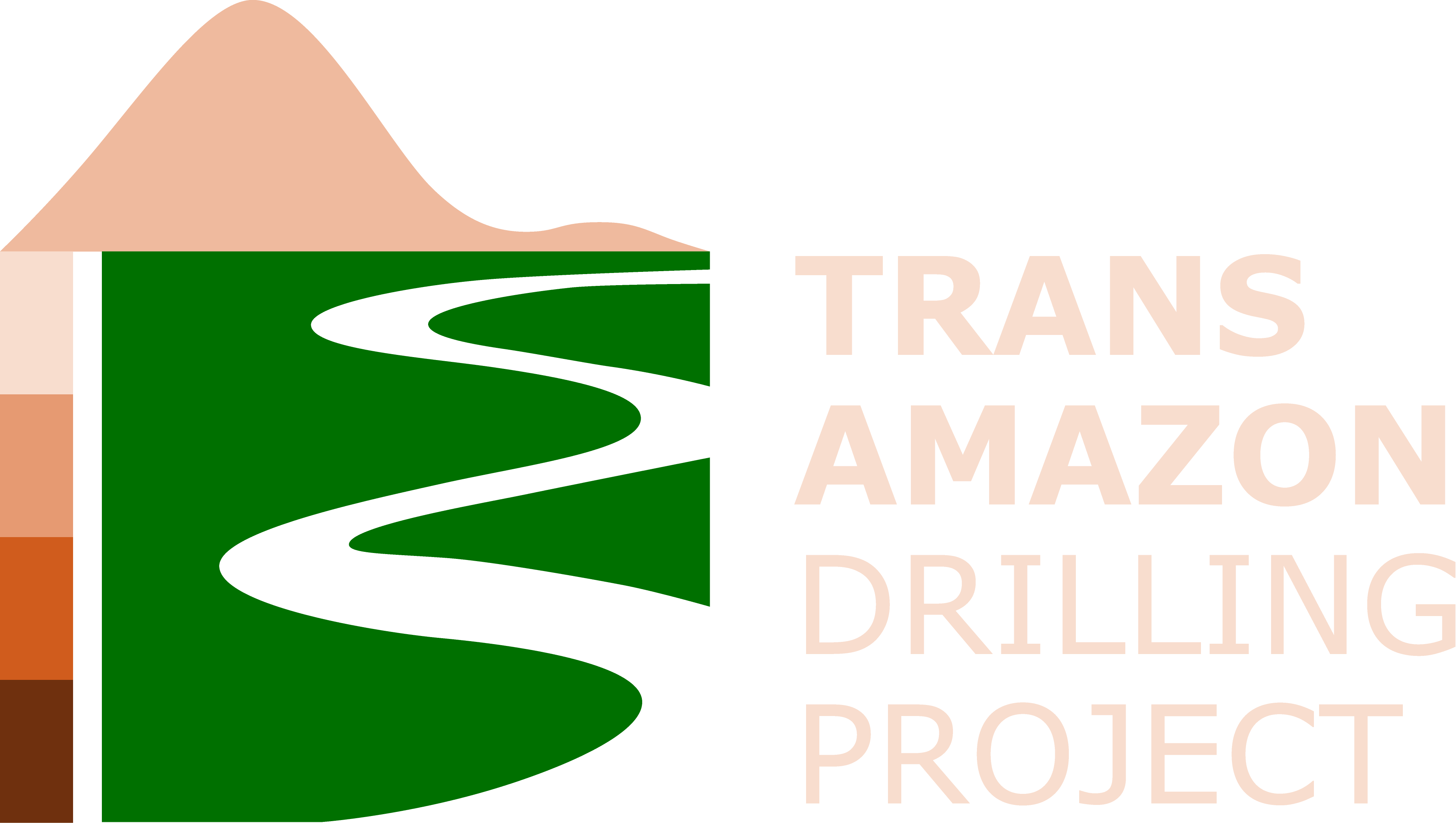Acre basin
The Acre Basin of westernmost Brazil is an extension of the Peruvian Ucayali and Madre de Dios foreland basins. Here, the maximum thickness of the Cenozoic section is about 2000 m. The oldest sediments of interest to our project are Upper Cretaceous fluvio-deltaic mudstones of the Rio Azul and Divisor Formations and shallow to transitional marine sediments of the Paleocene-lower Eocene Ramon Formation. Following Eocene Andean orogenic phases, shallow marine and lacustrine shales, sands, and red beds were deposited, comprising the Poza, Chambira, Pebas, and Ypururu Formations of eastern Peru and the Solimões Formation of western Brazil.

In the Acre Basin, the Solimões Formation unconformably overlies the Ramon Formation, but this unconformity is probably not long-lived. The Solimões Formation is of Eocene to late Miocene age, with dominantly fine-grained, fluvio-lacustrine sediments. Only late Miocene sediments are exposed. The Solimões Formation in the Acre Basin was slightly deformed during the Mio-Pliocene Andean orogenesis. The Bata-Cruzeiro and the Moa-Jaquirana faults were reactivated at this time, causing uplift of the Serra do Divisor range on the Brazil-Peru border and re-routing major drainages of the region.

In the Acre Basin we intend to drill to 2000 m depth, and encounter:
- Pleistocene Içá Formation, 0-25 m, sandy interval;
- Mio-Pliocene Solimões Formation, 25-1320 m, argillaceous sediments with sandy, silty, and carbonate interbeds;
- Ramon Formation, 1320-1810 m, argillaceous sediments with sandy, silty, and carbonate interbeds; (4) Divisor Formation, 1810-1950 m, sandstone with argillaceous interbeds;
- Rio Azul Formation, 1950 m to bottom of hole, sandstone.
Seismic reflection data show no angularity or large-scale erosion along contacts between the various units.

The site is located in the municipality of Rodrigues Alves, on the banks of the Juruá River, a few km from the city of Cruzeiro do Sul. Drilling objectives in the Acre Basin include:
- recovery of a thick, nearly continuous, Upper Cretaceous to Pleistocene succession, important for developing a complete Cenozoic record of spatio-temporal variations in biodiversity and climate of the near-equatorial Amazon;
- the Acre Basin is well located to receive Andean sediments, thus recording the initiation of Andean uplift and exhumation history at these latitudes;
- the presence of sandstones will allow U-Pb and luminescence provenance determinations that can address questions about Amazon drainage and the timing of a possible drainage reversal from an eastern continental shield source area to a western Andean source;
- proximity to the Andes also ensures that there will be volcanic ash beds that can be dated, establishing independent dating constraints for palynostratigraphy of the Amazon basin;
- the basin is well situated to record putative marine incursions and lacustrine or mega-wetland sedimentation;
- the known abundance of carbonate interbeds and molluscan shells in this basin will allow isotopic constraints on paleo-environments;
- the K/Pg boundary interval will be the first one studied within all of Amazonia
The drill site TADP-AC-1 prior to the drill rig installation.






